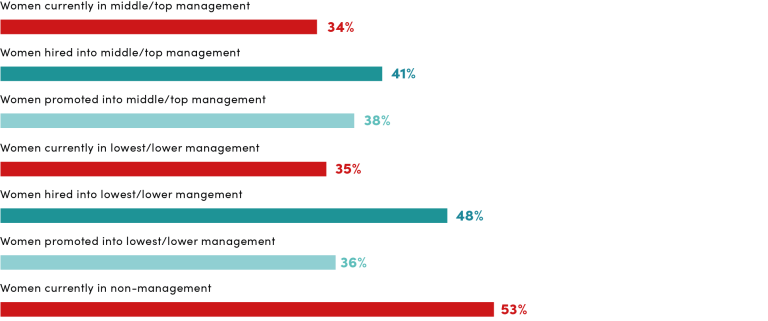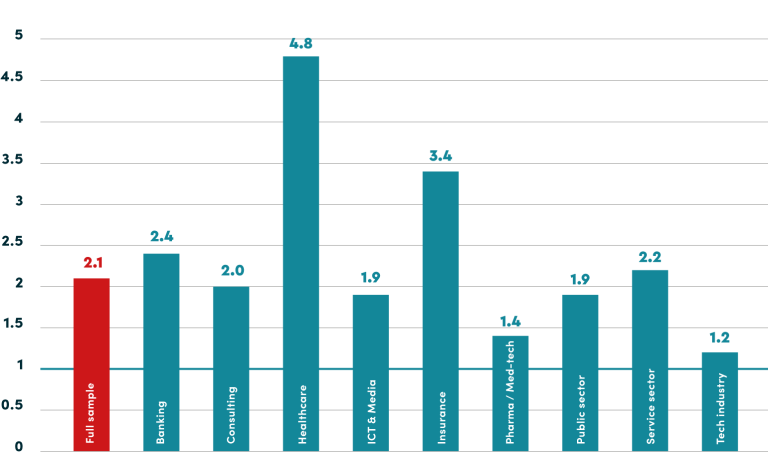Compared to other industries, the public sector shows a unique gender distribution across hierarchical levels. Like all other sectors, it experiences a decline in the share of women from non-management to top management — in this case, a decrease of 22 percentage points (from 53% to 31%). A closer look reveals that 18 of those points are already lost in the transition from non-management to lowest/lower management. From lowest/lower management to top management, the decline accounts for only four additional percentage points. This suggests that the main challenge for women in the Public Sector lies in making the initial step into management. In contrast to the other sectors, lowest and lower management were combined in the public sector, as only one organization in the sample has a lowest management level
In recruitment, women are generally represented at higher rates than in promotions. In lowest/lower management, 48% of all new hires in these positions are women — 13 percentage points higher than the existing female share in these positions. For promotions at this level, the share of women is 36%, which is just one percentage point above the current female proportion. However, both figures fall below the share of women in non-management, which serves as the pipeline for lowest/lower management.
In middle/top management, the results are somewhat more positive. The female share of 41% in recruitment and 38% in promotions is above both the current female representation in these positions and the share of women in the pipeline (lowest/lower management).
Recruitment and promotion can therefore contribute to increasing the share of women in management positions.


Gender differences in average employment rates are more pronounced in the public sector than in other industries. In non-management, women work at average rates of 74%, which is 16 percentage points lower than men (90%). In management positions, average employment rates increase noticeably for both genders. In lowest/lower management, women work on average at 86%, which is 11 percentage points below the male average of 97%. As a reminder: the largest drop in female representation occurs between non-management and lowest/lower management — a pattern that may be linked to the generally higher employment percentages at this level. This could mean that women working part-time are not considered as part of the talent pool for promotion.